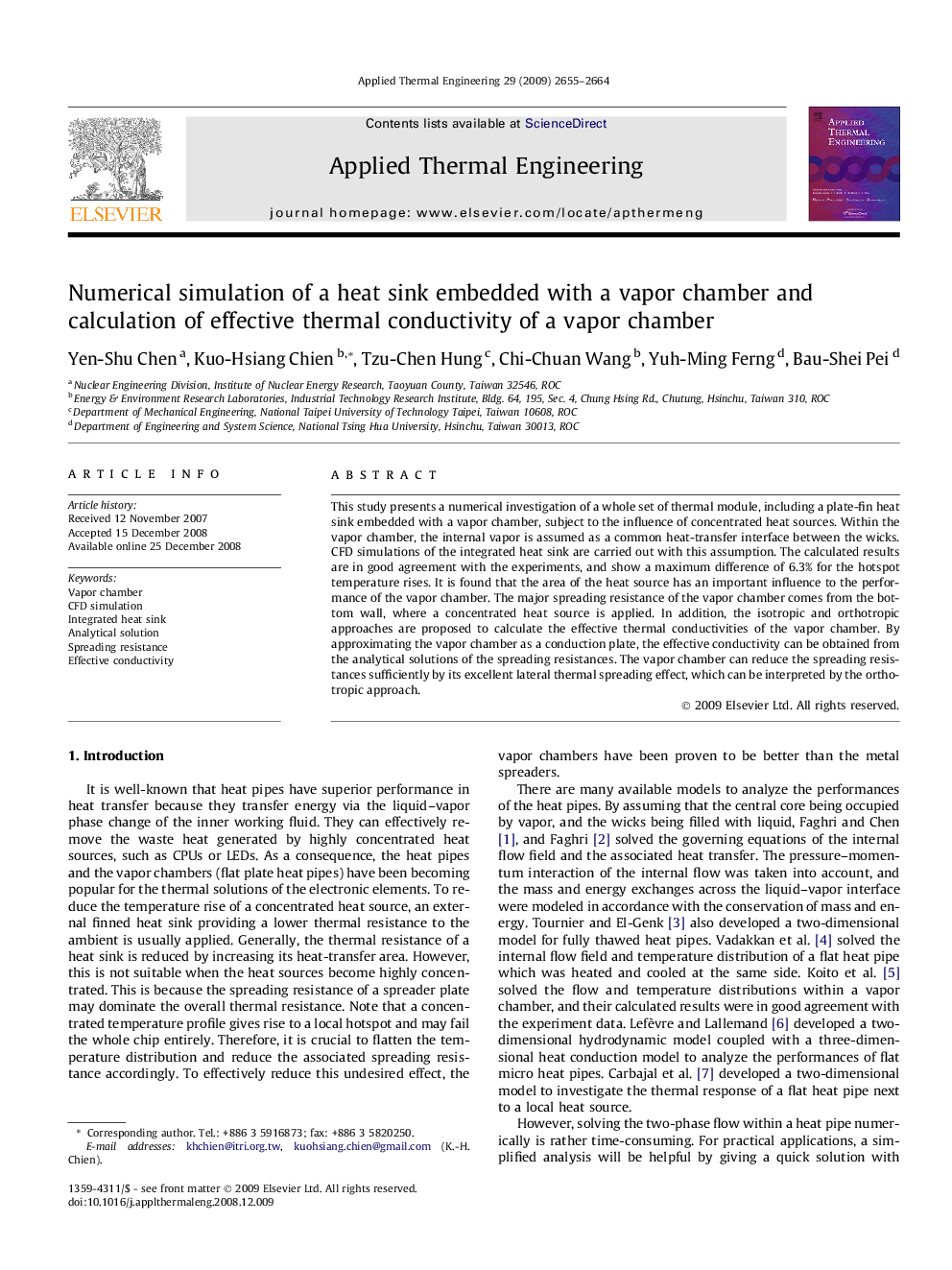| Article ID | Journal | Published Year | Pages | File Type |
|---|---|---|---|---|
| 649076 | Applied Thermal Engineering | 2009 | 10 Pages |
This study presents a numerical investigation of a whole set of thermal module, including a plate-fin heat sink embedded with a vapor chamber, subject to the influence of concentrated heat sources. Within the vapor chamber, the internal vapor is assumed as a common heat-transfer interface between the wicks. CFD simulations of the integrated heat sink are carried out with this assumption. The calculated results are in good agreement with the experiments, and show a maximum difference of 6.3% for the hotspot temperature rises. It is found that the area of the heat source has an important influence to the performance of the vapor chamber. The major spreading resistance of the vapor chamber comes from the bottom wall, where a concentrated heat source is applied. In addition, the isotropic and orthotropic approaches are proposed to calculate the effective thermal conductivities of the vapor chamber. By approximating the vapor chamber as a conduction plate, the effective conductivity can be obtained from the analytical solutions of the spreading resistances. The vapor chamber can reduce the spreading resistances sufficiently by its excellent lateral thermal spreading effect, which can be interpreted by the orthotropic approach.
